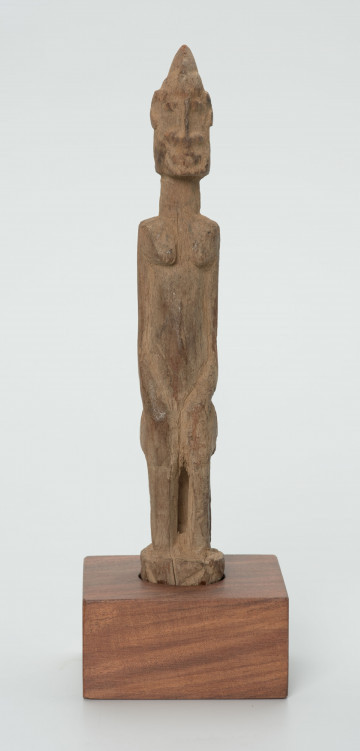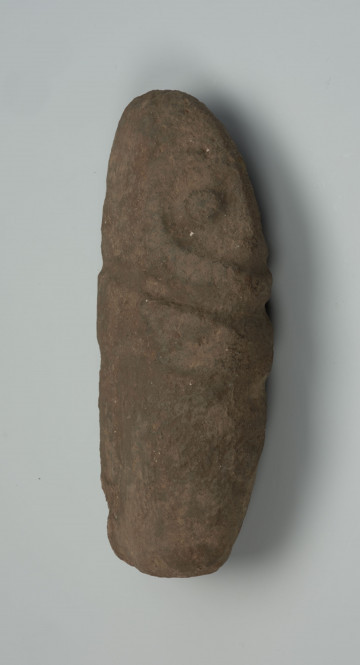
Figurine - ancestor
między 1901 — 1950
National Museum in Szczecin
Part of the collection: Collection of Dogonian art
The Yeban are bush-dwelling beings, tutelary deities sympathetic to humans. Their origin is unclear. According to some accounts they were created by Amma, the supreme god of the Dogon, just after the begetting of Nommo, before Amma and Nommo brought the first humans into existence. There is also an account that says that the Yeban were the ancestors of humans and the beings into which the old Dogon transformed themselves. Snakes were the intermediate form of these transformations, interrupted with the appearance of death. Another version of the Yeban origin tells us that they were born from the incestuous relationship between the Yurugu and Mother-Earth. Yeban are immortal, invisible to most people. Only young boys and girls and people gifted with clairvoyance can see them. They resemble humans, but are smaller, thinner and have very large heads. They cannot speak, they only make sounds like murmurs. They live in dense bushland, under large trees growing alone, and in caves. Like humans, they mate, have children and build villages. In the past, all the land belonged to them, so before cultivating their plots of land, people must make a propitiatory offering to them. Even in the first half of the 20th century, land lying fallow was considered reserved for the Yeban.Thanks to their nyama commanded by touch, twins are born. If a Yeban touches the belly of a woman sleeping in the bush, she will give birth to twins. Yeban's life energy is very precious. After birth, it accumulates in the hair of both the children and their mother. For this reason, they must not be cut for the first year of the twins' lives.Nowadays, the Yeban avoid people out of respect for them and therefore they are rarely seen.
Ewa Prądzyńska
Author / creator
Dimensions
cały obiekt: height: 17 cm, width: 7 cm
Object type
figure
Creation time / dating
Creation / finding place
Identification number
Location / status

między 1901 — 1950
National Museum in Szczecin

między 1951 — 2000
National Museum in Szczecin

między 1951 — 2000
National Museum in Szczecin
DISCOVER this TOPIC
National Museum in Lublin
DISCOVER this PATH
Educational path